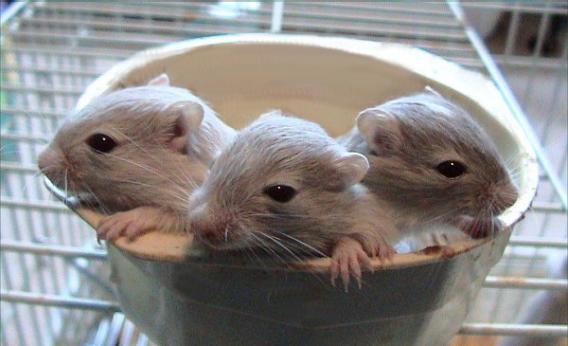Somber words out of Russia this week: “Unfortunately, because of equipment failure, we lost all the gerbils.”
The Bion-M1 biosatellite that returned to earth Sunday also carried various microorganisms, plants, crayfish, snails, geckos, and mice in an attempt to better understand the effects of microgravity on life in space. (Some news organizations are reporting the geckos as “newts,” which is not inconsequential. Newts are amphibians, not lizards, and they typically require a good deal of moisture, which might make them less likely candidates for space travel.) Happily, the geckos returned alive and slurping, though more than half of the mice gave their lives in the name of science—read: died—throughout the course of the month-long orbit. This was the longest animals-in-space study of its kind.
And it raises the question: If humans now serve six-month stints on the International Space Station, why are we still flinging little fur balls into space?
For one, Commander Chris Hadfield wouldn’t let us dissect him upon return. (Sure, the guy’s a science communication rock star, but what has he done for humanity lately?) Obviously, we can study the medical monitoring and anecdotal evidence of astronauts on the ISS, but that’s hardly the same as picking through the connective tissue of the recently space-traveled.
And pick we shall. NASA is cooperating with the Russian Institute of Biomedical Problems, and our researchers have dibs on some rodent parts. Projects are planned to study inner ear balance mechanisms, spinal columns, reproductive health, and numerous other topics that aim to analyze entire biological systems. (Germany also sent some tilapia. And France chipped in 15 of the 45 mice—which is sort of like bringing hummus to a tailgate party.)
The other big reason we’re still sending critters into space is that science has come a long way since the days of Muttnik. This might not be the first time gerbils have floated through the heavens, but new technology enables us to learn more from them each time they go.
“We can do a much more detailed molecular analysis than was available back then,” Jamie (David) Fitzgerald, an Oregon Health and Science University researcher and project collaborator, told me in an email. “Also, we can detect more subtle biological alterations due to lack of gravity—ones that may become larger issues with longer duration spaceflight such as to Mars.” Fitzgerald will be studying the rodents’ cartilage for deterioration due to reduced biomechanical loading.
There you have it—Mars: the Red Whale of Modern Space Exploration. Perhaps one day a human will stand on the Martian surface and glance back through the vast celestial graveyard of beasts that made it all possible. And those eight Mongolian gerbils shall not have died in vain.
